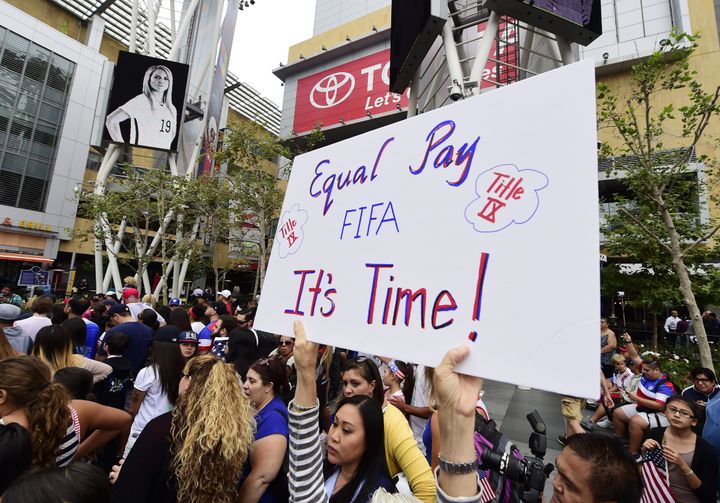After seeing the "horrible," potentially dangerous field conditions at Aloha Stadium on Saturday, the U.S. Women’s National Team refused to play its Dec. 7 friendly against Trinidad and Tobago, stop No. 7 on its World Cup Victory Tour.
The turf on which the team was supposed to play was torn-up, rock-ridden and outdated -- and just the fact that the team was expected to compete there without qualms or complaints throws into focus the undertow of sexism that still lives on in the sport today.
Soccer’s gender gap, if you will, was supposed to have shrunk in the half-year since the women’s national team hoisted up its World Cup championship trophy. And maybe, in the fan’s eye, it has. But this incident has made it all too obvious that, from an organizational standpoint, women’s soccer still has a hell of a long way to go before it -- literally and metaphorically -- shares the same field as the men’s sport.
The USWNT players made that abundantly clear this weekend. Citing concerns over safety and sexism, striker Alex Morgan, for one, argued on Sunday that the club needs to be “more vocal” when its field conditions aren't up to snuff, especially when compared to the quality of the men's team's fields.
"I think the training grounds that we were given and the playing surface of the stadium were horrible,” Morgan said. “It's hard because no one's really going to protect us but ourselves. So we're put in a very hard position because obviously we want to play in front of these fans and we want to train before the game but injuries happen when you don't protect yourself and when you're not protected from those higher up from you.”
In the hopes of further explaining their decision to nix the game, the team published an op-ed on The Players’ Tribune on Sunday, describing “how bad the stadium’s field truly was.”
In the article, the team wrote that there were “sharp rocks” all over the field; that the turf was “pull[ed] up out of the ground” at certain spots; and that the turf was so “low-grade and aging” that coach Jill Ellis was forced to clip the squad's practice down to 30 minutes to prevent potential injuries.

“This was about field conditions and player safety,” the team wrote. “It’s as simple as that. Soccer is our job. Our bodies are our jobs. And nothing should ever be put in competition with our protection and safety as players. With all that in view, we made our decision: These simply weren’t acceptable conditions for an international match.”
We've heard these arguments before, but changes have been slow to come. As Fox Sports pointed out, some of the biggest names in the international game began to take legal action against FIFA over “the use of turf fields in the 2015 Women’s World Cup” prior to the tournament -- and while the suit itself was never put forth, the statement was clear: It’s unfair and blatantly prejudicial for women to receive less money to play on more dangerous fields.
"I think the team needs to be a little more vocal ... about whether this is good for our bodies and whether we should be playing on it if the men wouldn't be playing on it,” Morgan further explained Sunday. "We've been told by U.S. Soccer that the field's condition and the size of the field are the first two talking points of when they decide on a field, so I'm not sure why eight or nine of our 10 Victory Tour games are on turf whereas the men haven't played on turf this year."
The team had already lost veteran Megan Rapinoe to a knee injury on Friday. There were quite literally sharp objects protruding from the 100-plus yards of turf they were supposed to play on on Sunday. And these 20-odd players had just garnered international fame in July for notching the top spot at the World Cup -- something their counterparts on the men’s squad have never, ever done. So how could they have been expected to play in conditions so potentially harmful to their health and livelihood? How could this field have been deemed acceptable in the first place, when an impromptu, cursory checkup this weekend led the Federation to agree that calling the game was the only feasible solution?
As The Players’ Tribune piece and Morgan’s statements make clear, the degree of barefaced sexism that still exists in the sport today is shocking -- just five months after they raised that World Cup trophy, marking just the latest moment when they, not the men, were the unquestioned stars of U.S. soccer in the public eye.
“[T]his was about wanting to protect women’s soccer players in general,” the team wrote. “At the end of the day, we expect to be treated equally as our male counterparts. And we hope that, in the future, our fields and our venues will be chosen and inspected at the standard of an international match -- whether it’s men or women playing on the field.”
Our U.S. Women's National Team deserves better. Stand behind them.
Also on HuffPost:

